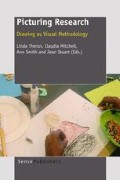Abstract
Lesotho has the third highest HIV prevalence in the world with 260,000 out of 2,000,000 people, most of them still in school, living with HIV and AIDS. Of these people, 56% are women (UNAIDS, 2008). Education has been described as a ‘vaccine’ against HIV and AIDS (Coombe, 2003) because of relatively lower rates of HIV infection among people with higher levels of educational participation.
Access this chapter
Tax calculation will be finalised at checkout
Purchases are for personal use only
Preview
Unable to display preview. Download preview PDF.
REFERENCES
Acholonu, C. O. (1995). Motherism: The Afro-centric alternative to feminism. Women in Environmental Development Series, Volume 3. Owerri, Nigeria: Afa.
Arndt, S. (2002). The dynamics of African feminism: Defining and classifying African-feminist literatures. Trenton, NJ: Africa World Press.
Ashton, H. (1967). The Basuto: A social study of traditional and modern Lesotho (2nd ed.). London, England: Oxford University Press.
Bourdieu, P. (1991). Language and symbolic power (G. Raymond & M. Adamson, Trans.). Cambridge, MA: Harvard University Press. (Original work published 1982).
Coombe, C. (2003). HIV/AIDS and education: Managing for disaster in the SADC region. In K. Lewin, M. Samuel, & Y. Sayed (Eds.), Changing patterns of teacher education in South Africa: Policy, practice and prospects (pp. 84–90). Cape Town, South Africa: Heinemann.
Emecheta, B. (1979). The joys of motherhood. London, England: Alison and Busby.
Foucault, M. (1978). The history of sexuality, Volume 1: An introduction. (R. Hurley, Trans.). New York, NY: Random House. (Original work published 1976).
Guma, M. (2001). The cultural meaning of names among the Basotho of Southern Africa: A historical and linguistic analysis. Nordic Journal of African Studies, 10(3), 265–279. Retrieved from http://www.njas.helsinki.fi
hooks, b. (1981). Ain’t I a woman? Black women and feminism. Boston, MA: South End Press.
Kimmel, M. S. (2004). The gendered society (2nd ed.). New York, NY: Oxford University Press.
Krais, B. (1993). Gender and symbolic violence: Female oppression in the light of Pierre Bourdieu’s theory of social practice. In C. Calhoun, E. LiPuma, & M. Postone (Eds.), Bourdieu: Critical perspectives (pp. 156–177). Cambridge, England: Polity Press.
Martin, E. (1998). Immunology on the street: How non-scientists see the immune system. In S. Nettleton & J. Watson (Eds.), The body in everyday life (pp. 45–63). New York, NY: Routledge.
Munro, P. (1998). Subject to fiction: Women teachers’ life history narratives and the cultural politics of resistance. Buckingham, England: Open University Press.
Nussbaum, M. (2002). Women’s capabilities and social justice. In M. Molyneux & S. Razavi (Eds.), Gender justice, development, and rights (pp. 45–77). New York, NY: Oxford University Press. 10.1093/0199256454.003.0002
Paechter, C. F. (1998). Educating the other: Gender, power and schooling. Abingdon, England: RoutledgeFalmer.
Schratz, M., & Walker, R. (Eds.). (1995). Research as social change: New opportunities for qualitative research. New York, NY: Routledge.
Setiloane, G. M. (1976). The image of God among the Sotho-Tswana. Rotterdam, The Netherlands: Balkema.
Stuart, J. (2006). From our frames: Exploring visual arts-based approaches for addressing HIV and AIDS with pre-service teachers (Doctoral dissertation, University of KwaZulu-Natal, Durban, South Africa). Retrieved from http://hdl.handle.net/10413/858
UNAIDS. (2008). Report on the global AIDS epidemic. Retrieved from http://www.unaids.org/en/KnowledgeCentre/HIVData/GlobalREport/2008
Editor information
Editors and Affiliations
Rights and permissions
Copyright information
© 2011 Sense Publishers
About this chapter
Cite this chapter
Khau, M. (2011). Teacher Sexuality Depicted. In: Theron, L., Mitchell, C., Mitchell, C., Smith, A., Smith, A., Stuart, J. (eds) Picturing Research. SensePublishers. https://doi.org/10.1007/978-94-6091-596-3_9
Download citation
DOI: https://doi.org/10.1007/978-94-6091-596-3_9
Publisher Name: SensePublishers
Online ISBN: 978-94-6091-596-3
eBook Packages: Humanities, Social Sciences and LawEducation (R0)


